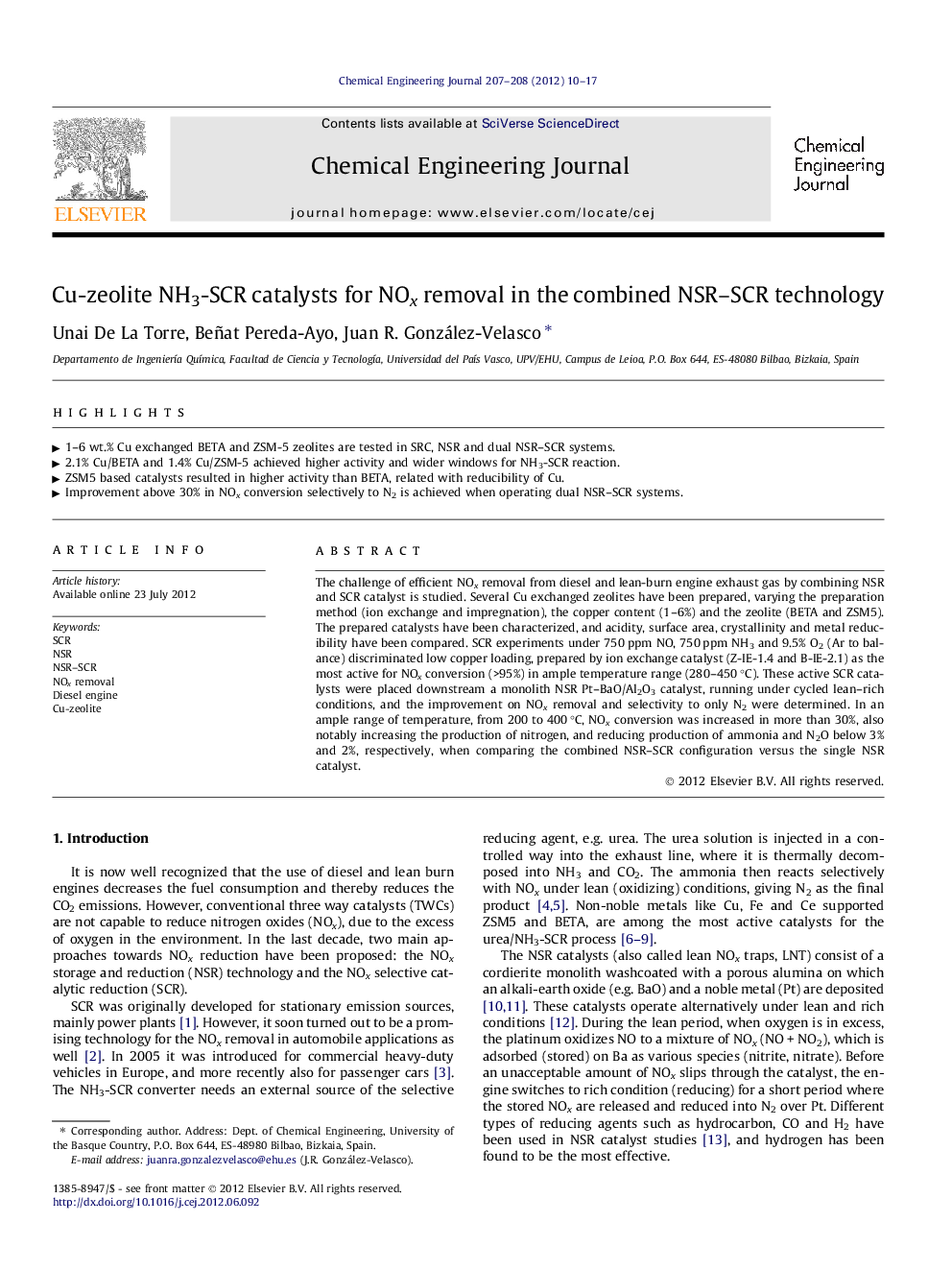| Article ID | Journal | Published Year | Pages | File Type |
|---|---|---|---|---|
| 149397 | Chemical Engineering Journal | 2012 | 8 Pages |
The challenge of efficient NOx removal from diesel and lean-burn engine exhaust gas by combining NSR and SCR catalyst is studied. Several Cu exchanged zeolites have been prepared, varying the preparation method (ion exchange and impregnation), the copper content (1–6%) and the zeolite (BETA and ZSM5). The prepared catalysts have been characterized, and acidity, surface area, crystallinity and metal reducibility have been compared. SCR experiments under 750 ppm NO, 750 ppm NH3 and 9.5% O2 (Ar to balance) discriminated low copper loading, prepared by ion exchange catalyst (Z-IE-1.4 and B-IE-2.1) as the most active for NOx conversion (>95%) in ample temperature range (280–450 °C). These active SCR catalysts were placed downstream a monolith NSR Pt–BaO/Al2O3 catalyst, running under cycled lean–rich conditions, and the improvement on NOx removal and selectivity to only N2 were determined. In an ample range of temperature, from 200 to 400 °C, NOx conversion was increased in more than 30%, also notably increasing the production of nitrogen, and reducing production of ammonia and N2O below 3% and 2%, respectively, when comparing the combined NSR–SCR configuration versus the single NSR catalyst.
• 1–6 wt.% Cu exchanged BETA and ZSM-5 zeolites are tested in SRC, NSR and dual NSR–SCR systems. • 2.1% Cu/BETA and 1.4% Cu/ZSM-5 achieved higher activity and wider windows for NH3-SCR reaction. • ZSM5 based catalysts resulted in higher activity than BETA, related with reducibility of Cu. • Improvement above 30% in NOx conversion selectively to N2 is achieved when operating dual NSR–SCR systems.
